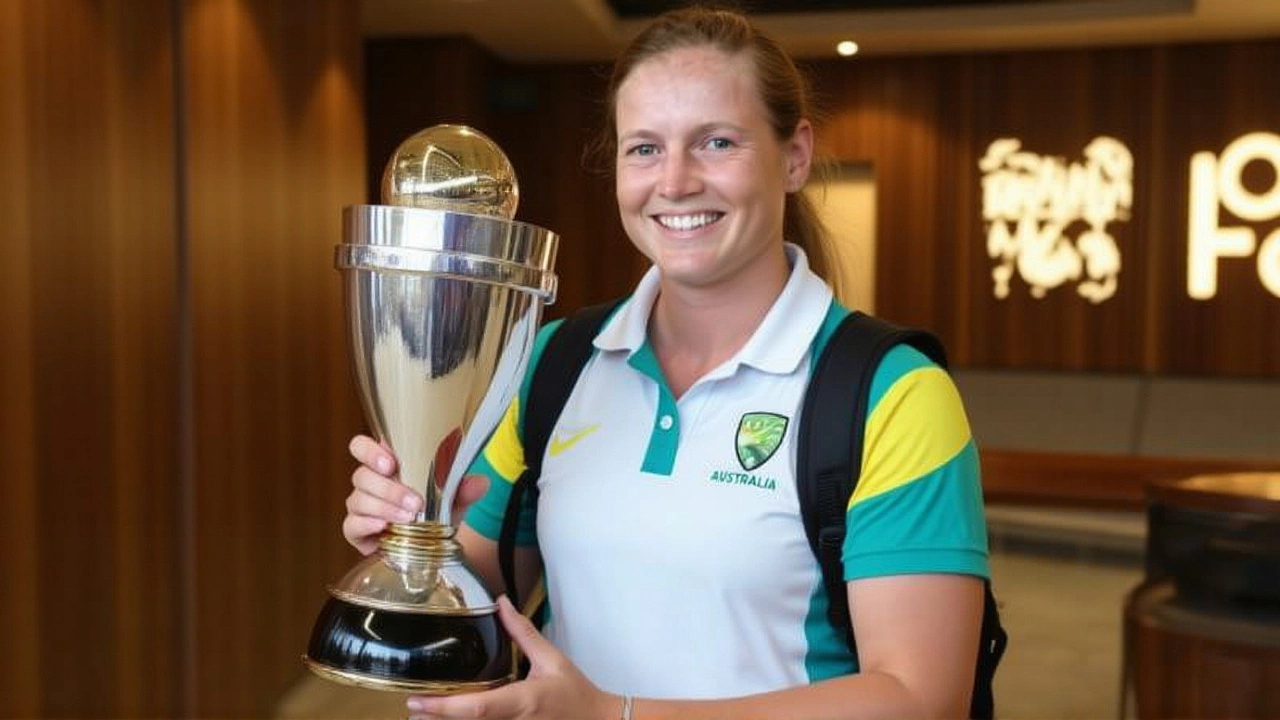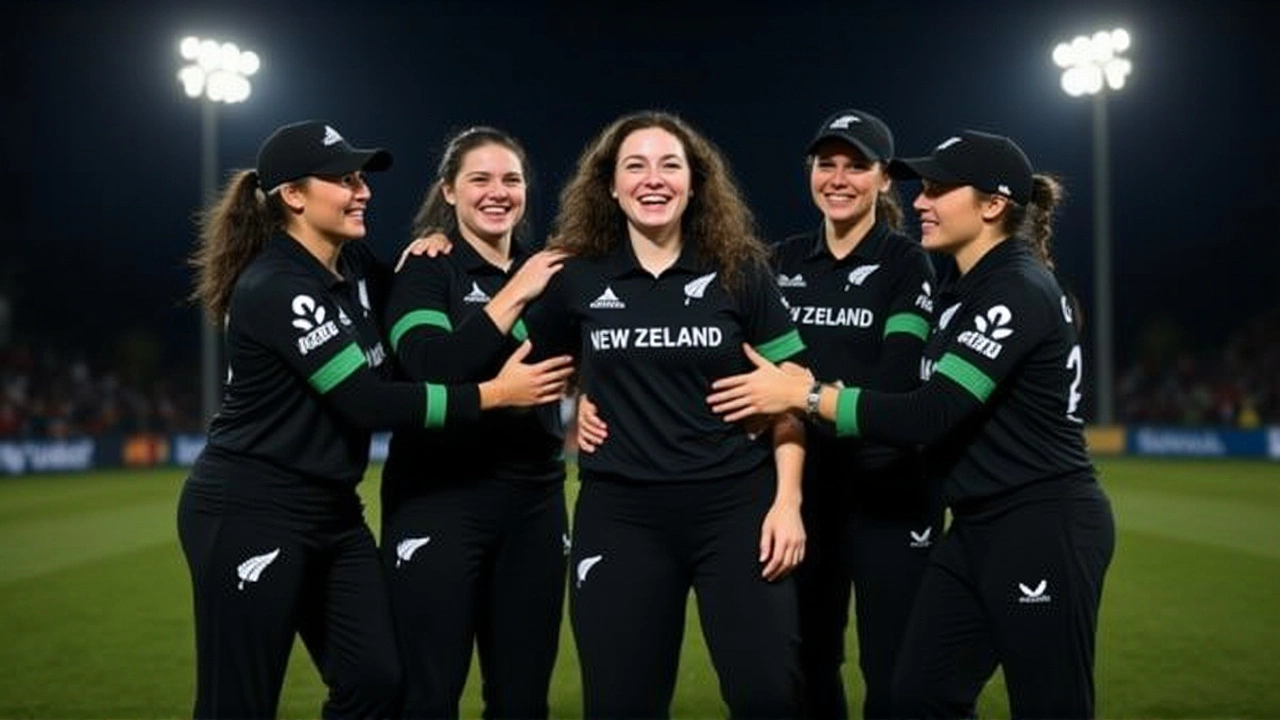On October 10, 2025, the New Zealand Women's cricket team, the White Ferns, finally broke their tournament duck in the ICC Women's Cricket World Cup with a crushing victory over Bangladesh. Captain Amelia Kerr, skipper of the New Zealand Women's national cricket team, led her side to a dominant performance that lifted the entire squad after two shaky starts. Set 228 runs to win, Bangladesh crumbled under New Zealand's relentless bowling attack at the unnamed tournament venue, securing the White Ferns' first points in the 2025 edition. This win wasn't just about runs and wickets—it kept their semi-final hopes alive when they needed it most.
Here's why this mattered: New Zealand arrived in the World Cup as one of the heavyweights, having won the trophy back in 2000 and finished runners-up four times since. But after losing their first two matches, pressure was mounting on the squad. For Bangladesh, this was their fourth consecutive World Cup appearance—showing real progress since their 2017 debut—but they've yet to break into the top four. The White Ferns needed this win like oxygen. Turns out, their young talent delivered when it counted.
A Debutant's Dream Performance
While Kerr's leadership set the tone, all eyes were on Rosemary Meyer—making her international debut for New Zealand. Her first over in World Cup cricket produced what Willow TV commentary called "an absolute beauty of a delivery" that clean-bowled Bangladesh's Eden Caren. Meyer finished with figures that silenced any debut nerves: 3 wickets for just 28 runs. The commentary at timestamp 195 captured the moment perfectly: "Bangladesh needing 228 runs to win from their 50 overs"—and Meyer was dismantling that dream early.
Wicket-keeper Izzy Gays proved why she's the backbone behind the stumps, with the broadcast noting "Missed as well by Izzy Gays" during a crucial moment—showing how even the best have to fight for every chance. Fielding specialist Susie Bates, referred to as "Susie B." throughout the match, snatched two diving catches that left commentators declaring "She doesn't drop them." These weren't just routine plays; they were the difference between a close contest and a comprehensive victory.
The Organizational Backdrop
The tournament's framework explains why this win felt so vital. The International Cricket Council, headquartered in Dubai, structured this as a ten-team round-robin where each side plays nine matches before the top four advance. New Zealand Cricket, based in Wellington, has governed the White Ferns since 1894—making them one of the oldest cricket nations. Meanwhile, the Bangladesh Cricket Board in Dhaka has been developing women's cricket since Bangladesh gained ICC Full membership in 2000.
What many fans don't realize? This 2025 tournament marks the twelfth edition of the Women's Cricket World Cup—first held way back in 1973. It's actually the oldest world championship in women's sport, predating the men's tournament by four years. The White Ferns' 2000 victory remains their only title, while Bangladesh has never advanced past the group stage. That historical context made this clash more than just another match—it was about breaking patterns.
Why the Gap Matters
Let's be real: this wasn't a fluke. New Zealand's 227 all out reflected their experience in pressure situations. Bangladesh's batting collapse revealed the gulf between established and emerging nations. Former New Zealand all-rounder Amy Satterthwaite put it bluntly in her ESPN analysis: "When you're chasing 228 on a slow pitch, you need your top order to fire. Bangladesh's middle order hasn't yet learned to handle that heat."
Here's the thing—Bangladesh's women have made huge strides. But they're still learning to convert tournament appearances into wins. Meanwhile, New Zealand's victory showed why they remain a powerhouse: depth in talent, experience in crunch moments, and that special something when the pressure's on. The White Ferns' dressing room buzzed with relief after the match, while Bangladesh's players lingered on the field looking shell-shocked. That emotional contrast told the real story.

What Comes Next for Both Teams
New Zealand now carries momentum into their next match against Australia on October 15. Win that, and they'd be right back in the semi-final race with 4 points from 3 matches. But they'll need to fix their top-order inconsistency—they struggled to build big partnerships in the first two games. Bangladesh faces a steeper climb: they must beat both Pakistan and Sri Lanka while hoping other results go their way to stay in contention.
Experts are already watching how Bangladesh handles this setback. "They've got great talent like Maru Ractor," noted former Bangladesh captain Salma Khatun, "but they need to play more high-pressure games against top teams." The White Ferns, meanwhile, will be analyzing Meyer's action—could this debutant become their X-factor for the rest of the tournament? That's the kind of question that keeps fans hooked.
Frequently Asked Questions
How did New Zealand's debutant bowler perform in her first World Cup match?
Rosemary Meyer took three crucial wickets for just 28 runs in her debut match, including a standout delivery that clean-bowled Bangladesh's Eden Caren. Broadcast commentary specifically highlighted her "absolute beauty of a delivery" during the 12th over, making her the standout performer in New Zealand's victory.
What does this win mean for New Zealand's tournament chances?
This victory gives New Zealand two crucial points after two initial losses, putting them at 5th in the ten-team standings with 7 matches remaining. They now need to win at least 4 of their next 7 games to realistically challenge for a top-four finish and semi-final berth.
Why is the gap between cricketing nations more pronounced in women's cricket?
Women's cricket has received significantly less funding and match exposure than men's. Teams like New Zealand have played 42 World Cup matches since 1973 compared to Bangladesh's 16 total appearances since 2017, creating vast experience disparities that directly impact tournament performance.
What makes the Women's Cricket World Cup historically significant?
First held in 1973, this tournament predates the men's World Cup by four years and stands as the oldest world championship in women's sport. It's been running for over 50 years with 12 editions, making it a cornerstone of women's international cricket history.
